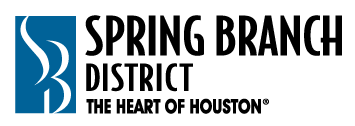By: Newspring’s Business EDGE Team
Since Small businesses have limited resources, EDGE recommends taking an approach that can be summed up with 3 M’s:
- Manage cash flow
- Measure results
- Modify your strategy
Managing cash flow is essential when you are faced with uncertainty. Every cash flow forecast begins with assumptions of sales and expenses. Your first step is to consider the major factors affecting the business’ sales and create the top 3 scenarios. Then, determine the most likely scenarios for your sales and assign a weight (probability) to each value. The weighted average of the three scenarios will provide you with the basis for your sales forecast.
For example:
| Sales Volume in Units | x | $ per Unit | = | Sales in $ | x | Probability | = | Total Sales | |
|---|---|---|---|---|---|---|---|---|---|
| Scenario 1 | 15,000 | $25.00 | $375,000 | 40% | $150,000 | ||||
| Scenario 2 | 20,000 | $22.00 | $440,000 | 25% | $110,000 | ||||
| Scenario 3 | 30,000 | $25.00 | $750,000 | 35% | $262,500 | ||||
| Sales Forecast | 100% | $522,500 |
Once a sales forecast has been formulated, your second step is to develop an estimate of the expenses necessary to operate your business at this level. Include supplies, payroll costs, utilities, rent, etc. The result is your expense forecast.
A simplified version:
| Budget Forecast | |
|---|---|
| Revenue | $522,500 |
| Less Expense: | |
| Payroll Costs | $150,000 |
| Supplies | $200,000 |
| Rent | $50,000 |
| Utilities | $35,000 |
| Other | $15,000 |
| TOTAL Expenses | $450,000 |
| Income/(Loss) | $72,500 |
Upon completing these two steps, you have two key tools for managing your business. Your sales forecast provides you with a tool for managing progress towards your revenue goal and your expense forecast provides you with your operating budget.
In addition to these two key management tools, you now have the input for building your cash flow forecast. In most cases, not all customers pay for products and services immediately, and many expenses can be paid at a later date. In other words, there are timing differences between the financial transaction and the change in your bank account. You need to understand and document how these timing difference will affect your ability to meet payroll, pay vendors, and pay taxes. Getting these timing differences into a spreadsheet is essential to understanding how your cash position (cash flow) will change over your business’ normal operating cycle(s).
Cash flow management techniques seek to maximize the cash received and reduce the amount of cash used for expenses. Whenever possible, have customers pay sooner and work with suppliers to allow your business to pay later. Consider offering a discount for early payment. Based on your available cash, determine how your sales and expenses will affect your cash balance in the short term, 30 days, 90 days and 1 year. If it makes sense to use financing options such as a loan or line of credit, these forecasts will help decide how long it may take to repay the funds. A realistic cash flow forecast provides the third essential management tool that will require constant monitoring.
If the business is very sensitive to changes in cash, review the changes in cash every day, otherwise, review the cash flow weekly on the same day of each week. For instance, if your business is open Monday through Friday only, you might want to look at the cash balance and changes during the week on every Friday. By contrast, if weekend sales are a big source of cash, review the cash flow on Mondays.
Measure results
Experts and advisers can offer assistance with setting goals and measuring outcomes. Having a set of goals helps create a list of things to do to reach the level of business you want. Key performance indicators (KPI) are measurements used to evaluate the operation of the business.
KPI’s might include:
- Income
- Number of new customers
- Expenses compared to sales
- Actual sales verses budgeted sales
- Cash available compare with amounts needed immediately
- Number of times supplies were not available for purchase
Each KPI should be useful in the business. Measuring outcomes helps business managers and owners decide what changes might be needed to improve the operation of the business.
Modify the strategy
It is very important to understand that developing your sales forecast, operating budget, and cash flow forecast is only a starting point. Your survival will depend on establishing a disciplined approach to reviewing and adjusting both your Revenue forecast and operating budget. For example, your initial sales forecast was based on a set of sales scenarios that included your estimated probability of completing a set of sale and obtaining payment from the customer. However, when customer demand waivers, the probability of making the sale has to be adjusted to reflect the reality of the situation. Or, if supply chain issues or availability of qualified labor are an issue, you will have to lower the probability of completing the sale even if the customer is sending strong buy signals. Failure to update your sales forecast to reflect changes in your business environment will expose your to surprises that create challenges in controlling your operating budget and meeting financial obligations.
The good news is that when the results are different than expected, small businesses can more quickly make changes than larger companies can change. The ability to recognize a need for change and take immediate steps to improve is one of the strengths of many small businesses. Consider what needs to change and how that will affect sales and expenses. Update the sales forecast and the operating budget accordingly.
Do not let the complexities of all of these moving parts discourage you. Big companies have boards of directors to help the CEO see the big picture and offer guidance. You can create an informal board by working with a business mentor who has the experience to help you “get a handle on the big picture” and adapt your strategy to meet the challenges that you are facing, and to guide you through the process of implementing a system to measure the results.
For more information about the Newspring Business EDGE program, contact Angela Cheves at [email protected]






